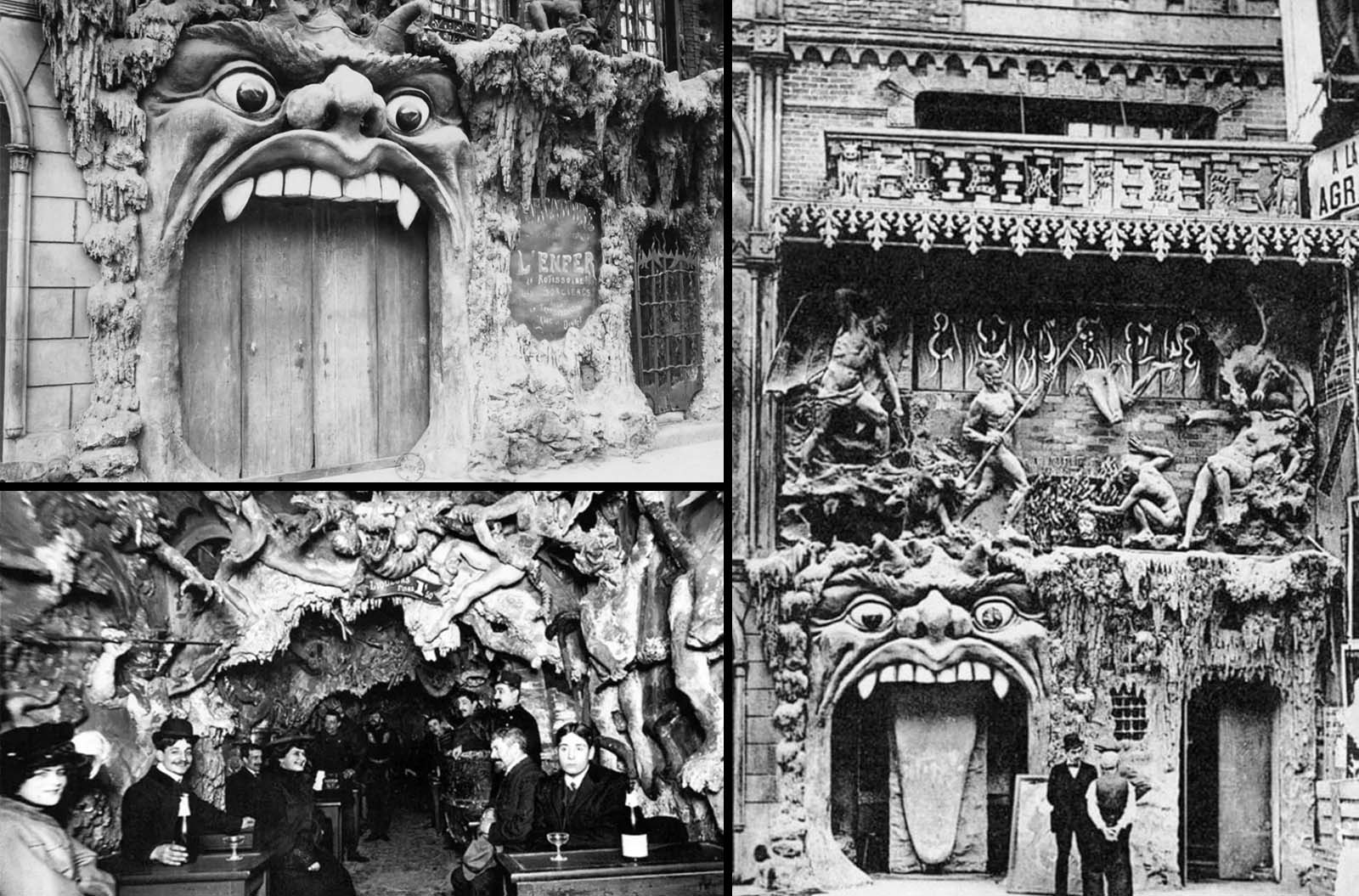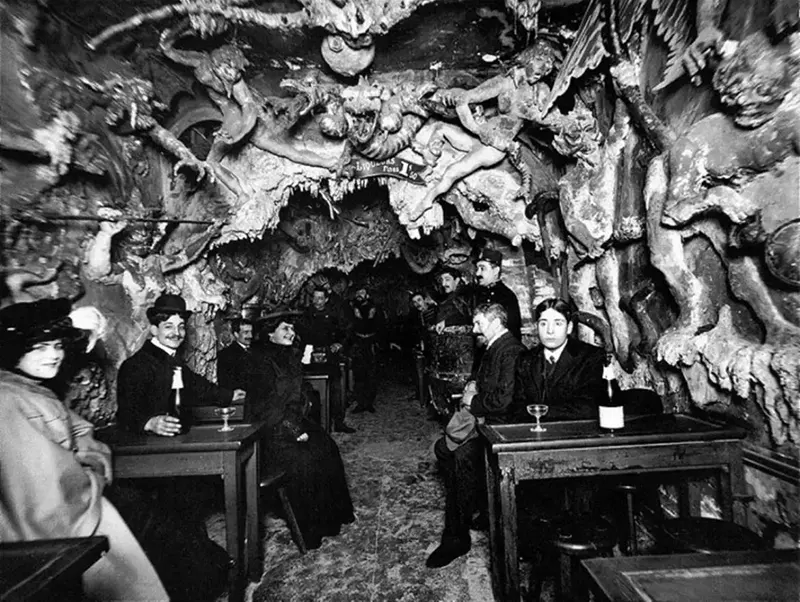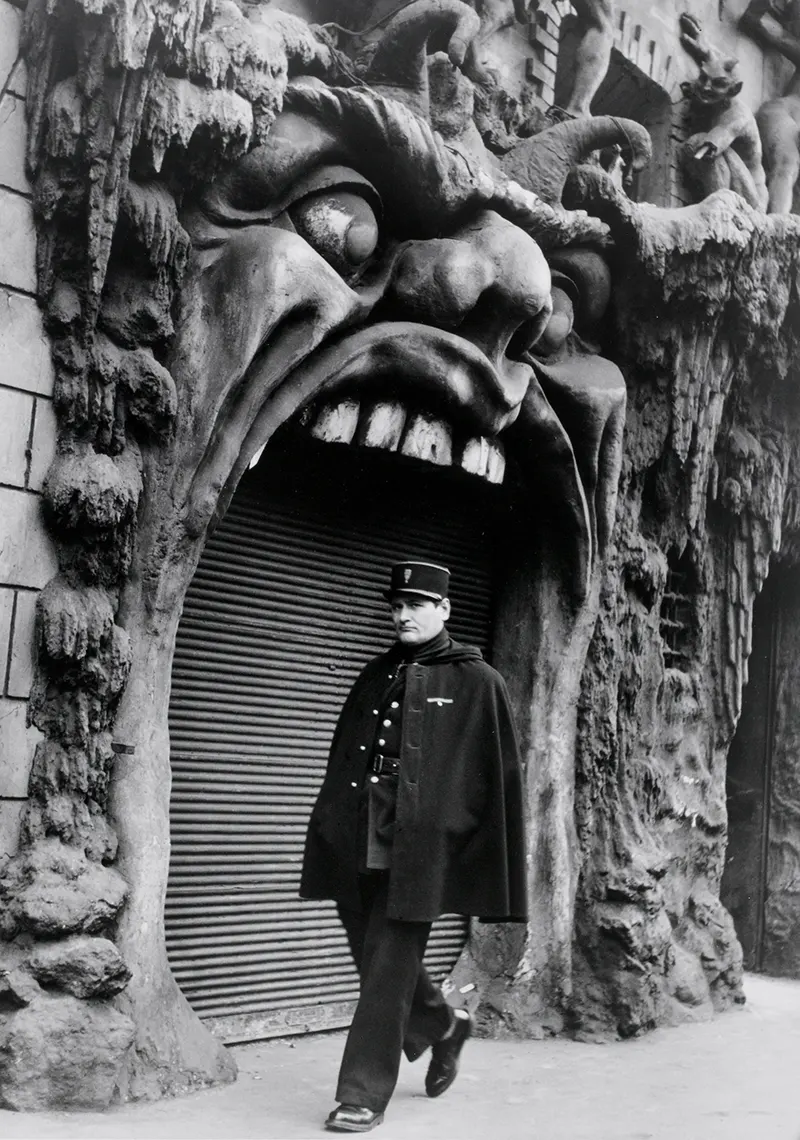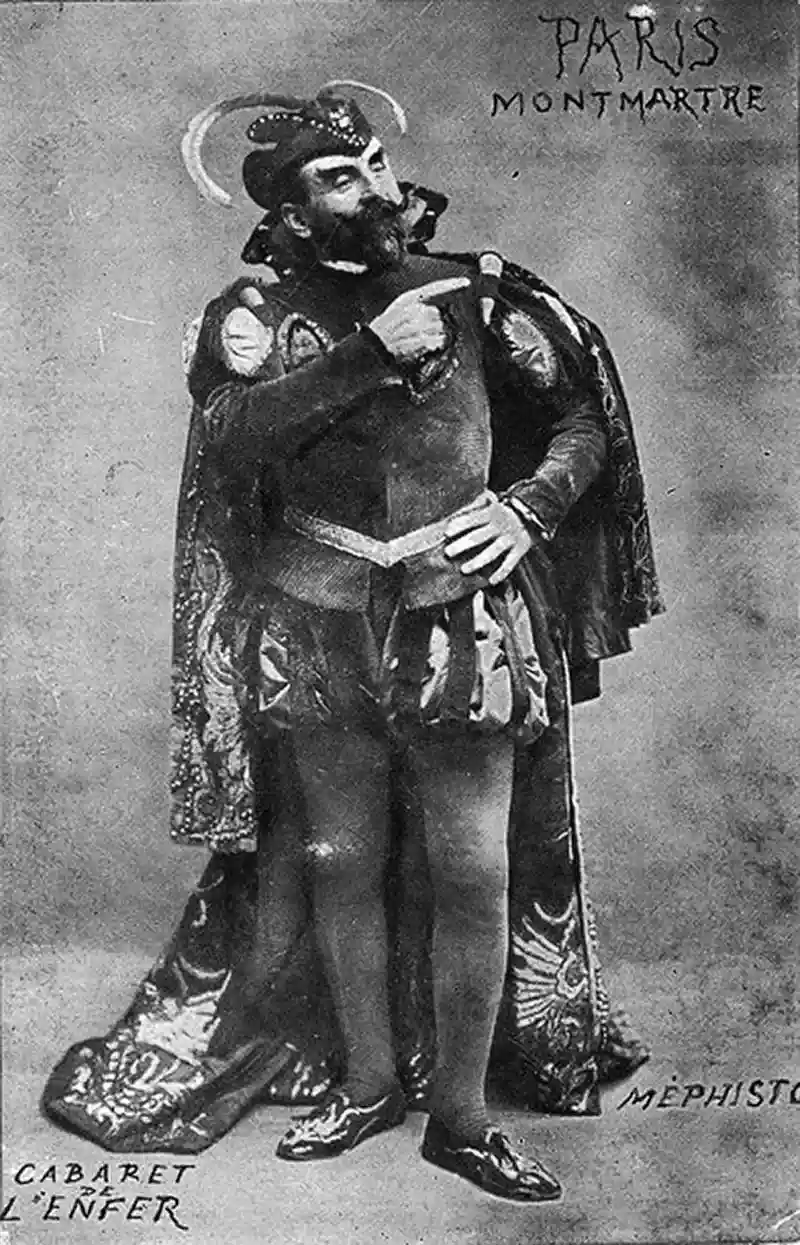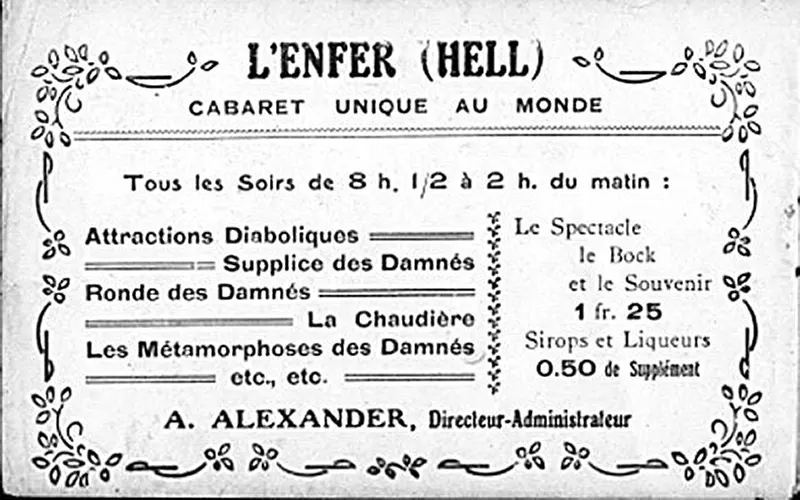Established in 1892 near Montmartre in Paris, this unique venue featured an entrance resembling the gaping jaws of a Leviathan, symbolizing damnation. This iconic cabaret was more than a mere entertainment venue; it was a portal into the underbelly of the city, where the fantastical and the forbidden converged in a mesmerizing spectacle. The Cabaret de L’Enfer was the counterpart to The Cabaret du Ciel (The Cabaret of Sky), another cabaret which shared the same address on the Boulevard de Clichy. Antonin Alexander was the creator, director, and host of the twin ventures.
Jules Claretie, who wrote that future historians of the mores of the Belle Epoque “could not silently pass by these cabarets”, described them as “putting Dante’s poem within walking distance”. For Georges Renault and Henri Château, “Le Ciel and L’Enfer, gaping wide-open all in a row” was worthy of the label “spectacular”. The intimidating façade was “a stucco ode to female nudity being devoured by infernal flames”. Situated at the foot of the hill of Montmartre, in the 18th arrondissement of Paris, The Cabaret de l’Enfer was a precursor to theme restaurants, whose ambience was its main attraction, and only occasionally hosted café singers. In 1895, three years after opening at 34 Boulevard de Clichy, Antonin moved the establishment down the street to number 53, where it remained for more than half a century. Meanwhile, the original location was purchased by a competitor, the illusionist Dorville, and his administrator, Roger, who opened a “cabaret macabre”, the Cabaret du Néant (Cabaret of the Void). This cabaret specialized in more sinister “invocations of what lies beyond the grave”, while the Cabaret du Ciel (Cabaret of Heaven) joyfully proposed “mystical illusions” and the Cabaret of Hell, “magic tricks”. According to Jules Claretie, the spectacles offered by the Cabarets of Ciel and Enfer “did not differ in essence from the attractions seen at the fête de Neuilly…They used the same illusionist tricks produced by combinations of mirrors and the play of light. But an organ added mysterious music to these rapid tableaux”. The atmosphere was jovial, and Antonin, a former literature professor, maintained its geniality, setting the tone with humorous, costumed discourses delivered either as Saint Peter or Mephistopheles. The doorman of the Cabaret of Hell, dressed as the Devil, greeted customers by telling them “Enter and be damned!”. Once inside, the patrons were served by waiters dressed in devil suits. In 1899, a visitor reported that, in the jargon used inside the café, an order of “three black coffees spiked with cognac” was relayed to the bar as: “Three seething bumpers of molten sins, with a dash of brimstone intensifier!”. The true essence of the Cabaret de l’Enfer lay in its eclectic and titillating performances. Dancers, singers, and other entertainers took to the stage, adorned in costumes that played into the theme of damnation and temptation. Their acts ranged from sensuous to grotesque, weaving narratives that often danced on the boundary of societal acceptability. The audience, a mix of locals and tourists, reveled in the seductive and scandalous nature of the performances, immersing themselves in the decadent ambiance of the cabaret. A few years after the Liberation of Paris, the Monoprix supermarket that had neighbored the Cabaret de L’Enfer since 1934 bought both cafés, gutted them, expanded, and replaced the two façades with their own front entrance. By 1950, all traces of the former Cabaret de L’Enfer were gone. The Monoprix currently occupies the length of the ground floor between the corner with Rue Pierre-Fontaine and number 51. The entrance stands where the Cabaret de l’Enfer used to be.
(Photo credit: Wikimedia Commons). Notify me of new posts by email.
Δ Subscribe
